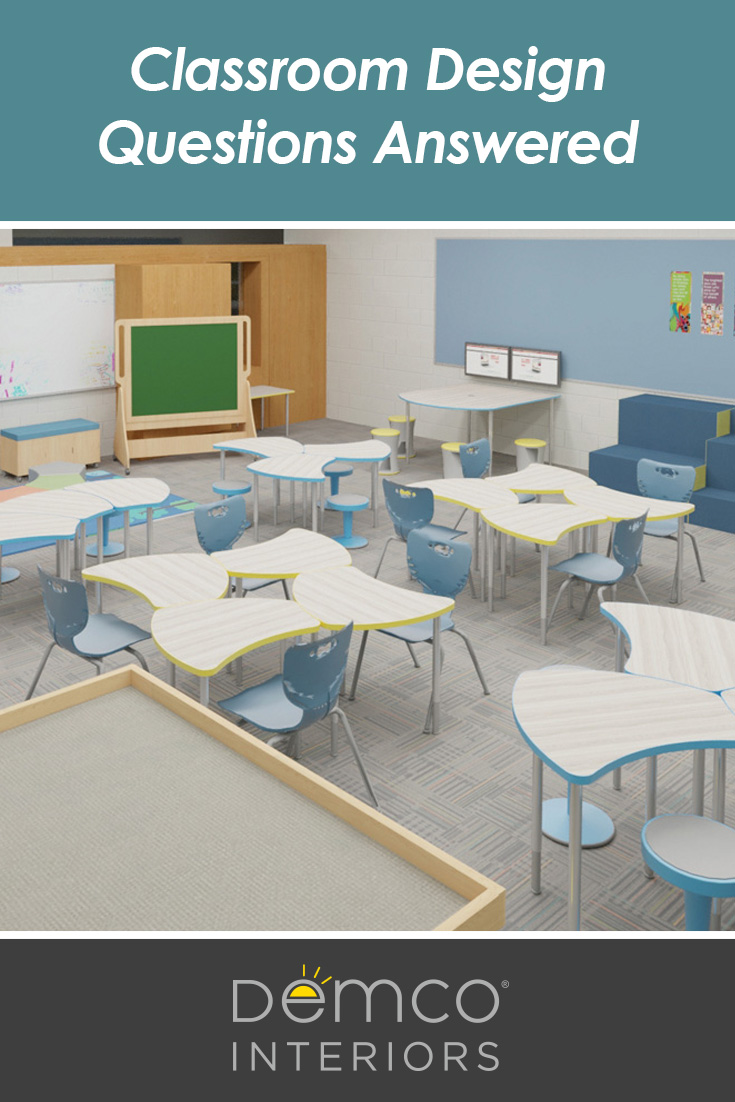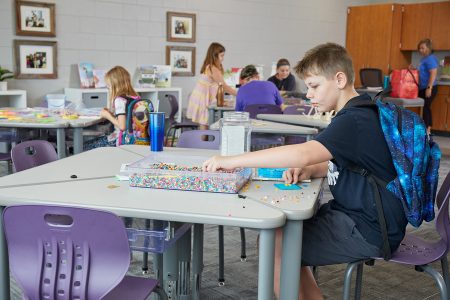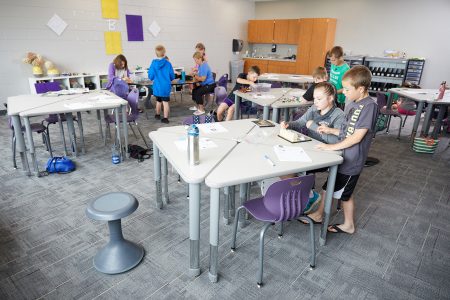 You know you want to find ways to enhance the learning experience through your library or classroom design, but where should you start? In my experience, every classroom and every school is different, but there are some universal things we can all do to maximize our learning spaces. Below I’ve compiled some of the questions I get asked the most and provided some tips to get you started looking at your spaces differently.
You know you want to find ways to enhance the learning experience through your library or classroom design, but where should you start? In my experience, every classroom and every school is different, but there are some universal things we can all do to maximize our learning spaces. Below I’ve compiled some of the questions I get asked the most and provided some tips to get you started looking at your spaces differently.
Getting Started
Where do I start?
- Experience your space in a new way. Take time to notice and push through space blindness, or in other words, look at your space from a different perspective. You may even want to solicit feedback from other educators who don’t visit your space often.
- Begin documenting feedback from students on what they like and don’t like about your space.
How do I go about asking for student opinions about classroom design if my district has already decided on what changes they are making?
- Even though some big decisions have already been made, microdecisions are yet to be made in your space. Ask students about the little things, as they can make a big difference.
- Ask students about their thoughts on previous decisions, as their voices can illuminate the journey going forward.
- Ask students about the perimeter of the room, and have them help you identify distractions.
How do I create more opportunities for teachers to experience different spaces?
- Have all of the educators in the district record a one-minute walking tour of their spaces. Make these videos available to all educators and consider viewing and discussing them during an in-service day.
- Start seeing spaces in the community as idea factories. Snap photos when you are in different places and make notes about what you liked about the space. Consider how these ideas can translate to your library or classroom design.
- Take an online tour of real spaces that have been designed by learning space experts. Although images on Pinterest can be visually appealing, most of them don’t take learning space design best practices into account. Visit the Demco Interiors Portfolio and take 360-degree virtual tours to gain inspiration for your spaces.
How do I get parents and my administration behind changes to our library or classroom design?
- Change one or two small things or redesign a small space, and then harness the strength of student voice. Get students talking about the power of your new spaces and what they love about them.
- Create a consistent and frequent messaging strategy to parents that includes lots of images and explanations about the learning taking place in your spaces.
- Help your administration see that the social-emotional needs of students are supported through this work and encourage them to visit your space as often as possible.
Creating an Effective Learning Space
How can I make my space the most effective learning environment for my students?
- Remove a few desks and see how the new space changes your perception of the room.
- Remove outdated items from the walls.
- Look for 10 items in the room that aren’t supporting the learning or are detracting from learning and remove them.
- Think about visual noise. Visual noise can be color, volume, or organization. Consider how each of these things is impacting students and what role it plays in learning. It is better to push a little outside your comfort zone when removing items you think might be distracting.
- Add a standing option for students, such as a sit-and-stand desk or a café-height table.
- Create a sanctuary area where students can calm themselves and have quiet space.
- Consider how nature plays a role in your classroom design, and find ways to integrate natural elements. Natural light has been shown to play a big part in boosting academic achievement, but if you don’t have access to this, you can also show images of nature on your digital display, bring plants and natural materials into the classroom, and get outside to learn when possible.
- Create a student design team to move items, try new things, and provide their opinion.
- Continue to create time and space to explore, be curious, and create.
- Keep the design momentum rolling by continually taking small risks, removing things, or trying something for 10 minutes. Look at one wall and change something. Do something in the area of instruction. Consider a new technology tool. All of these things support effective learning environments.
How can I update my classroom design with limited funding?
- Optimize what you have. Talk about it. Showcase it. Present a vision for what is possible. All of these things prime the pump, and often this results in money and support from parents, administration, your PTO, and your community.
- Be clear about your purpose and remove the items that aren’t laser focused on that purpose. Continue to look for ways to remove things as a strategy to see the space in different ways.
- Look for two to three items or ways to amplify your design, such as adding standing workspaces, a comfortable lounge area, or a unique seating option. You can consider turning your desk into a space for students as well.
- Survey the entire building for items that could be used in your space. There are often unused gems in other classrooms and closets.
- Ask the community, but be really specific in your asks. You don’t want your classroom to look like a garage sale, and you should be purchasing furnishings rated and designed for educational spaces.
- Provide more writable surfaces. Look for existing surfaces like glass, desks, or windows to let students write on, or get a piece of showerboard cut at a home improvement store and utilize the pieces as smaller whiteboards. You can also use a big roll of white paper.
How do you teach handwriting to young children without hard surfaces?
- There should still be plenty of hard work surfaces in a classroom. Removing the desks in a classroom may reduce the number of hard surfaces; however, you can use strategies such as station rotation to a greater degree.
- Students can use a number of temporary hard surfaces, such as clipboards, as they work in comfortable spots around the room.
How can I design a space suitable for different class sizes and the different subjects that I teach?
- Consider including a variety of work-surface heights in one space or look at height-adjustable options.
- Add writable space, as this works for all classes and subjects.
- Have students set up the room for the next learning group. This avoids the loss of instructional time at the beginning of the hour.
What suggestions do you have for high school classes that switch throughout the day?
- Develop a set of learning space principles that you are pursuing with a group of colleagues. These can include asking for feedback, having less as opposed to more, giving students access to writable space, and providing some additional movement.
- At minimum, break up the rows and desks by having different configurations of desks and chairs that support different modes of learning.
Dr. Robert Dillon
Latest posts by Dr. Robert Dillon (see all)
- How to Manage Your Active Classroom - April 22, 2020
- Answers to Your Questions About Effective Library and Classroom Design - April 2, 2020
- How to Measure the Success of Your New Learning Space Design - March 3, 2020
- How to Get Your Community and Staff Invested in Redesigning Your Learning Spaces - January 13, 2020
- 3 Ingredients of Active Learning Spaces - October 16, 2019




